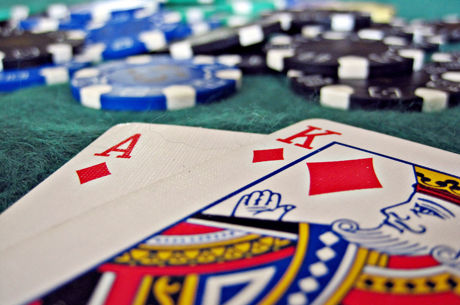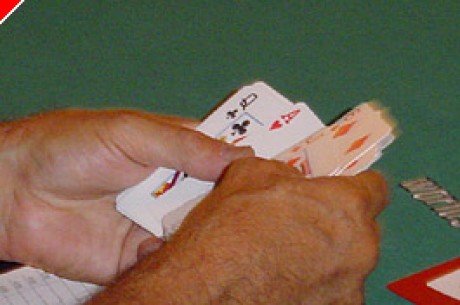Stud Poker Strategy - Moving Up? Part One

I visited the Cherokee Casino just outside Tulsa, Oklahoma the other day. I had flown in to compete in a few of the preliminary tournaments during the Scotty Nguyen Poker Challenge II. The event that most interested me was the $120 7-card Stud tournament. But I was also ready to play in the side games and in some of the no limit tournaments.
I'll report on the stud tourney and other parts of the tournaments in another column. I'd like to focus my attention in this article on a question that came up in a low limit stud game I played while waiting for some other higher action. It's a question that probably occurs to just about every low limit player at one time or another. Should I move up.
The game I was in was a $1-5 no ante spread limit game. It's the most common form of stud these days �C often the only game that a casino spreads. The only place that it doesn't seem to be spread much is on line �C where limit stud games (some as low as $.02/.04 seem to rule). But in public brick and mortar poker rooms the $1-5 games are very common.
At the Cherokee this was all they had. Honestly, it was a terrible game for the player. Typically, there was a bring-in for $1.00. A couple of people would stay. Maybe someone would raise to $2.00. They'd get a caller. Then they'd typically check it down �C sometimes to the River. Someone would bet $2 or $3.00 and the other person would fold �C or sometimes call. This wasn't always the betting action. But it often was. The pots would often be $11 or so. The house would take $2.00. The player would politely tip $1.00. For their investment of $4 or $6.00 they'd be lucky to win an additional $5.00 or so �C turning what appeared to be a nominal rake into a 50% rape. As I said, not a very fun game.
I left after about thirty minutes to move to a no limit hold 'em table. I would have preferred a bigger stud game, but this was all they had. So I choose hold 'em. As I was leaving, one of the younger players (he was only 60 or so) asked if he could chat with me for a few minutes. I gladly obliged him.
"How do I know when I'm ready to move up to a bigger game" he asked. "I'm beating $1-5 and I think I'm ready for $5/10 or maybe even $10/20" he added. Frankly, I didn't know how he was going to move up in this casino, but I gave him my answer anyway. Maybe he came from the east coast or generally played on line. Or maybe he could convince the house to spread a higher game (where the rake as a percentage of winnings would be less).
I'll tell you what I told him.
The decision to move up to a higher stakes game should be based on three factors �C any of which alone might be sufficient for you to start playing in the higher game. They are: bankroll, ability to win, and psychology. Let me go into detail about each in turn.
Bankroll: Your bankroll must be a critical consideration. If you are going to be able to sustain a game at a higher limit you must have sufficient capital to do so. How much is enough? Some of that depends on what kind of a player you are and what kind of a game you'll be entering. As a rule of thumb I like to have 250 times the big blind in a game if I am really going to give my shot at playing at that level. So for $10/20 that would be $5,000; for $5/10 that would be $2,500. That would be money that is specifically dedicated to playing poker �C not money from your checking or family savings account.
That being said, you don't need to have a complete bankroll to start playing at a higher level game. All you really need is the minimum buy-in �C which is often as little as ten times the small bet in the smaller games and ten times the larger bet in the bigger games.
Taking a stab might be all you want to do �C just to see how you do. There's some logic to doing this sooner rather than later. Sometimes getting your feet wet, even in a very brief session, helps eliminate the mystique of the higher limit game and helps a player move up permanently when he has amassed sufficient capitol. I recommend that even for a quick stab at a game you have at least ten times the big blind. If you can't even put that together then my advice is to wait until you can.
Ed Note: Titan Poker have great short handed No Limit action. Check it out.








